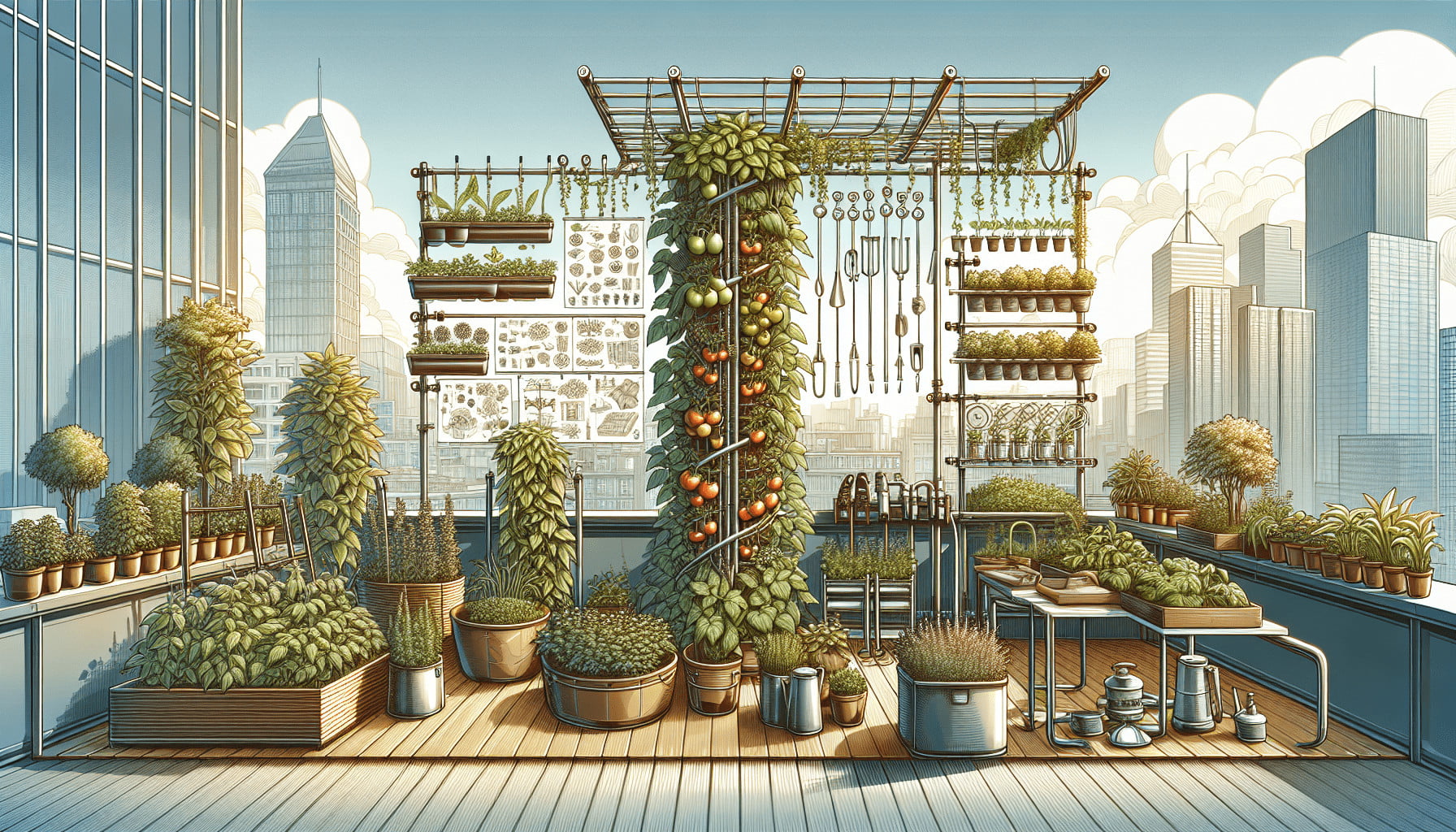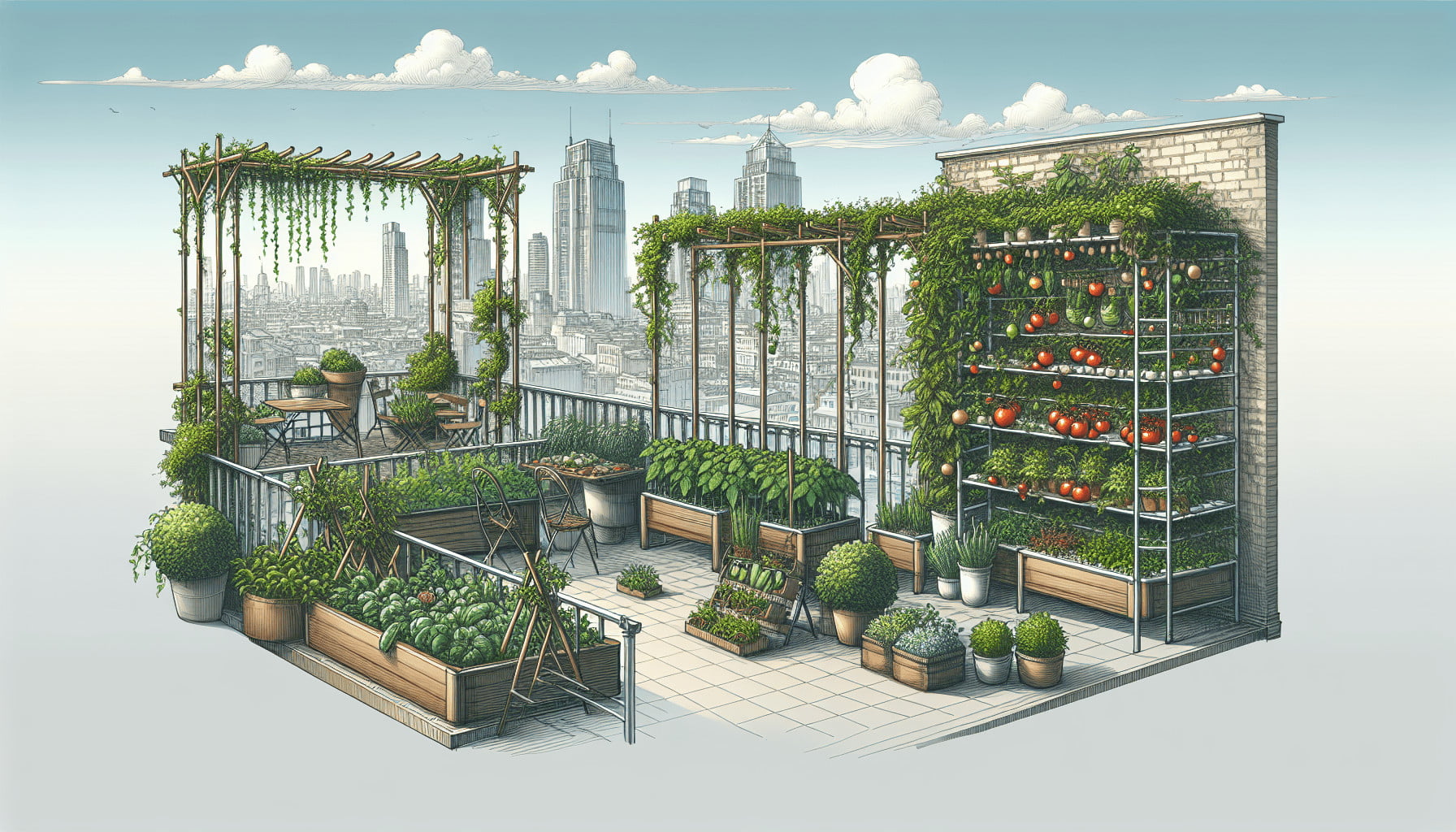Welcome to your guide on the “Most Popular Plant Support Tools For Urban And Rooftop Gardening!” In today’s bustling cities, you’re likely striving to find creative ways to nurture vibrant and thriving greenery in limited spaces. Whether you’re cultivating a rooftop oasis or tending to a cozy balcony garden, discovering the right tools can make all the difference. Dive into this article to learn about essential plant support tools that will not only help your plants flourish but also transform your urban gardening experience into a delightful and successful endeavor. Have you ever wondered how to make the most of your urban or rooftop garden? Transforming a tight city space into a green oasis can seem daunting, but with the right plant support tools, you can create a thriving garden no matter where you are!
Most Popular Plant Support Tools For Urban And Rooftop Gardening
Urban and rooftop gardening are becoming increasingly popular as people look for ways to incorporate greenery into their urban environments. From beautifying your space to growing your food, these gardens have myriad benefits. But success in these urban gardens often relies heavily on the tools and supports you use. Let’s dive in and explore some of the top plant support tools that you can’t afford to overlook.
Why Support Tools Are Crucial
Support tools are essential in urban and rooftop gardening for a variety of reasons. They help your plants grow upright, maximize space, and improve air circulation, which in turn reduces the chances of diseases. Not only do these tools aid in the health and structure of your plants, but they also make your garden look more organized and appealing.
Common Types of Support Tools
Trellises
A trellis is a framework of light wooden or metal bars, chiefly used as a support for fruit trees or climbing plants. They save space by allowing plants to grow vertically and make harvesting easier.
- Grid Trellises: These are perfect for plants like peas and beans, offering a basic grid where the plants can climb.
- Fan Trellises: Ideal for plants with a sprawling growth habit. They provide expansive vertical space.
- Obelisk Trellises: Typically used for aesthetic purposes in addition to providing plant support.
| Type of Trellis | Best For | Pro | Con |
|---|---|---|---|
| Grid Trellis | Peas, beans | Saves space | Can be expensive |
| Fan Trellis | Ivy, roses | Offers vertical space | May require more maintenance |
| Obelisk Trellis | Clematis, tomatoes | Aesthetic appeal | Typically more costly |
Stakes
Stakes are simple yet effective. They can be made from wood, metal, or plastic and are used to support taller plants like tomatoes and sunflowers.
Types of Stakes
- Single Stakes: Good for sunflowers or single-stemmed plants.
- Group Stakes: Ideal for plants with multiple stems.
Cages
Plant cages are perfect for supporting bushy plants and those with a tendency to sprawl. They are often used in vegetable gardening for plants like tomatoes and cucumbers.
- Wire Cages: The most common, sturdy and rust-resistant.
- Plastic Cages: Lightweight but may not be as durable.
Netting
Great for delicate plants like peas and beans, netting offers a flexible support system. It allows plants to climb without heavy-duty physical supports.
Arches and Arbors
If you’re looking to add a touch of elegance while providing support, consider arches and arbors. These are perfect for flowering plants and even some vegetables.
Planters with Built-in Support
For the ultimate convenience, many modern planters come with built-in supports. These are ideal for small plants and herbs.

Choosing the Right Support Tool
Plant Type
The type of plant you are growing significantly determines the support tool you’ll need. Vining plants like beans and cucumbers need trellises, while bush plants like tomatoes do well with cages.
Space Constraints
Urban and rooftop gardens often come with space limitations. Choose tools that maximize vertical space and keep your garden accessible.
Aesthetic Considerations
While functionality is key, the appearance of your garden matters too. Select supports that complement the overall look of your garden.
Durability
Given the exposure to elements like wind and rain, it’s essential to choose support tools made from durable materials.
| Consideration | Recommended Tools |
|---|---|
| Plant Type | Trellises, Stakes, Cages |
| Space Constraints | Trellises, Netting |
| Aesthetic Considerations | Arches, Arbors |
| Durability | Metal Trellises, Wire Cages |
Installation Tips for Support Tools
Trellises
- Placement: Place your trellis on the north side of your garden to prevent it from casting shadows over other plants.
- Anchoring: Secure the trellis firmly into the ground to withstand wind.
Stakes
- Depth: Ensure the stake is buried deep enough to support the plant’s growth.
- Tie Properly: Use soft materials like garden tape to tie plants to stakes to avoid damaging them.
Cages
- Early Installation: Place cages over your plants early in the growing season to avoid damaging roots.
- Choose the Right Size: Ensure the cages are tall and wide enough for the mature growth of the plant.

Maintaining Your Support Tools
Regular Checks
Regularly check your support tools for wear and tear. Damaged supports can fail, potentially harming your plants.
Seasonal Cleaning
At the end of each growing season, clean your support tools to extend their lifespan. Metal tools may need a rust inhibitor, while wooden tools could benefit from a protective sealant.
Storage
Store your support tools in a dry place during off-seasons to prevent them from weathering.
Advanced Techniques
Espalier
Espalier is an ancient technique usually used for fruit trees. It involves training plants to grow flat against a wall or fence. This method can save space and add an artistic element to your garden.
Suckering
This technique involves removing the side shoots of plants, especially tomatoes, to focus the plant’s energy on growing larger fruits. Suckering works well with cages and stakes.
Companion Planting
Companion planting involves growing plants together that benefit each other. For example, planting beans with corn can provide natural support for the beans.
Unique Challenges in Urban and Rooftop Gardening
Weight Constraints
Urban and rooftop gardens often have weight limitations. Opt for lightweight materials for your support tools to avoid putting too much strain on your space.
Limited Sunlight
Buildings can block sunlight, making it crucial to position your garden and supports to maximize light exposure.
Windy Conditions
Rooftop gardens can be windier than ground-level gardens. Secure your supports and plants adequately to withstand strong winds.
Soil Quality
Urban soils may not be as rich as rural soils. Using container gardens with high-quality soil can mitigate this issue.
Budget-Friendly Options
Gardening doesn’t have to break the bank. Here are some cost-effective tips:
DIY Trellises and Stakes
You can create your trellises and stakes using items like bamboo sticks or repurposed wood.
Upcycling Materials
Use old cages, fencing, or even furniture as plant supports. A bit of creativity can save you money.
Community Shares
Many urban gardeners form communities to share tools and resources. Joining a community can provide access to support tools at no cost.
Conclusion
Embarking on urban and rooftop gardening can be incredibly rewarding, especially when you have the right support tools. Whether you’re growing lush vegetables or beautiful blooms, these tools will help ensure that your garden thrives. From trellises and stakes to advanced techniques like espalier and companion planting, your urban oasis is well within reach.
Happy gardening, and remember – the sky’s the limit when it comes to utilizing urban and rooftop spaces for your green thumb endeavors!
